GĐXH - According to WHO estimates, 1.28 billion adults worldwide between the ages of 30 and 79 have high blood pressure. High blood pressure increases the risk of heart attack, stroke... Below are simple exercises that can be done at home to help lower blood pressure naturally. Performing these activities not only improves cardiovascular health but also improves overall health.
1. The role of exercise for people with primary hypertension
Researchers at the University of California, San Francisco's Benioff Children's Hospital found that people who got at least five hours of moderate exercise a week had an 18 percent lower risk of developing high blood pressure than those who exercised less.
- Regular exercise helps the heart function better and circulates blood to other parts of the body.
- Organs such as the liver, brain, lungs, kidneys... receive adequate amounts of compatible blood.
- Regulates blood cholesterol levels, reduces blood vessel blockage and atherosclerosis.
- Improves spirit, helps to relax, be optimistic and happy. Strengthens the body's resistance, supports the recovery process of high blood pressure treatment.
- Therefore, patients should spend time exercising every day to "live with" the disease safely.
2. Good exercises for people with primary hypertension
According to MSc. Dr. Pham Duc Thang (Ho Chi Minh City University of Medicine and Pharmacy), people with primary hypertension should practice exercises that are appropriate to their health condition. Below are some simple, gentle exercises suggested by doctors for patients to refer to:
2.1 Health care
- Relax
+ Position: Lie or sit comfortably in a chair.
+ How to do:
Step 1: Inhibit the five senses: Cover your eyes, practice in a quiet place, if it's hot, wear thin clothes or use a light fan; if it's cold, cover yourself with a thin blanket; away from where you're cooking...
Step 2: Tell yourself to relax your muscles, slowly and firmly, one muscle group at a time, from top to bottom, your whole body feels heavy and warm.
Step 3: Concentrate on breathing in and out through the nose to the lungs, about 10 breaths, can fall into a short nap of 15 - 30 minutes.
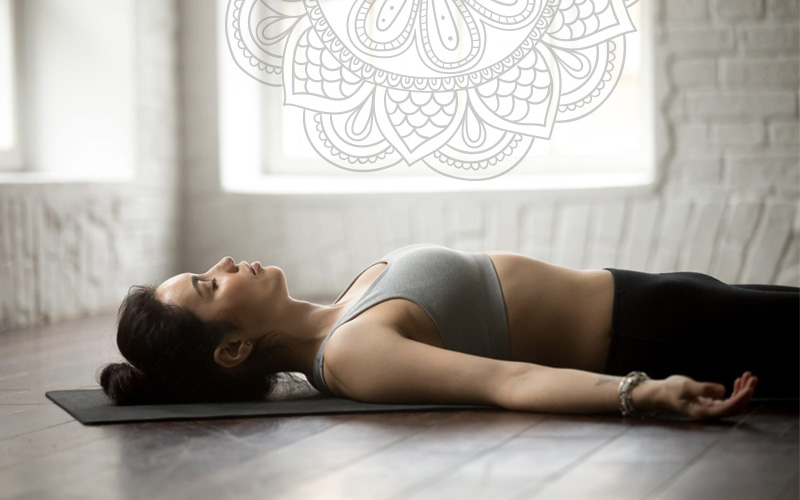
Relaxation pose in Yoga. (Photo: TL)
Practice twice a day. Relax at night to help you fall asleep easily.
- Breathe four times with buttocks raised and legs raised
+ Position: Lie on your back, place a pillow under your buttocks, about 5-8 cm high or low, place your left hand on your stomach, and your right hand on your chest. Placing a pillow under your buttocks puts the weight of your organs on your diaphragm, so when you inhale, your diaphragm will have to work harder to breathe because of the obstacle; that is how to train your diaphragm.
+ How to do
- Time 1: Inhale evenly, deeply, to the maximum, chest expands, abdomen bulges and tightens. Time 4 – 6 seconds (inhale chest, abdomen expands).
- Period 2: Hold your breath, open your larynx by continuously inhaling more, while simultaneously raising one leg and swinging it back and forth, at the end of the period lower your leg. Duration 4-6 seconds (hold your breath and inhale more). Alternately raise each leg about 20 cm high to train your abdominal muscles to be firm, while increasing the effect of massaging the internal organs during the breath-holding period.
- Time 3: Exhale, naturally and comfortably, without holding or forcing. Time 4 – 6 seconds (Breathing without holding).
- Time 4: Rest, relax, warm limbs. Prepare to return to time 1. Time 4 – 6 seconds (heavy rest warms body).
- Practice 2-3 times/day, 20 breaths each time.
- Spinal twist
+ Position: Lie on one side with your legs bent, lower leg stretched out behind you, upper hand holding the instep of the lower foot, pressing the upper foot against the lower knee, using the lower hand to press the upper knee to stretch more.
+ How to do: Inhale as much as possible. While holding the breath, swing your neck back and forth 2-6 times, opening your larynx by continuously inhaling more, exhaling thoroughly while squeezing your abdomen. Do 1-3 breaths then switch sides.
Practice 2-3 times/day, 5 breaths each time.
- Sitting in lotus
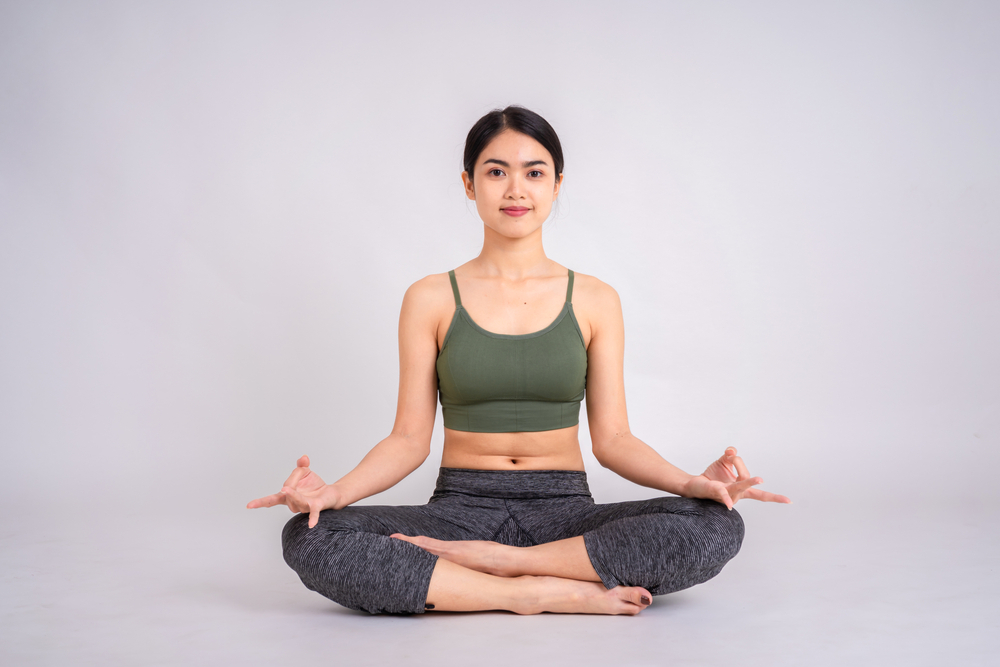
Lotus sitting position. (Photo: TL)
+ Double-legged position: Cross both feet on the thighs, soles facing up. If you cannot sit, sit in half lotus (single-legged position).
+ How to do:
- Inhale fully, keeping your larynx open (by continuously inhaling more), and sway your body back and forth 2 – 6 times.
- Exhale (through the nose) completely and turn your face to the left, hold it like that and then inhale fully, keep the larynx open (by continuously inhaling more), while swinging your body back and forth 2-6 times, exhale (through the nose) completely and turn your face to the right; return to the starting position, rest.
- Practice 2 times/day, 5 breaths each time.
2.2 Yoga
- Tree pose (Vrikshasana)
How to do it: Stand up straight with your feet together. Place the sole of your right foot on your left thigh, near your knee. Balance on your right heel and right hand. Hold for 30 seconds to 1 minute. Repeat with your left leg.
- Hero pose (Virasana)
How to do:
- Kneel on the floor, keeping your back straight, knees shoulder-width apart.
- Exhale slowly and lower your body so that your buttocks rest comfortably between your calves (do not sit on your calves).
- Fish pose (Matsyasana)
How to do:
- Lie on your back with your legs straight and your arms by your sides.
- Inhale deeply and lift your head, neck and shoulders off the ground.
- Bend your elbows and place your palms on your back.
- Hold the pose for 30 seconds to 1 minute. Exhale and return to the starting position.
- Boat pose (Navasana)
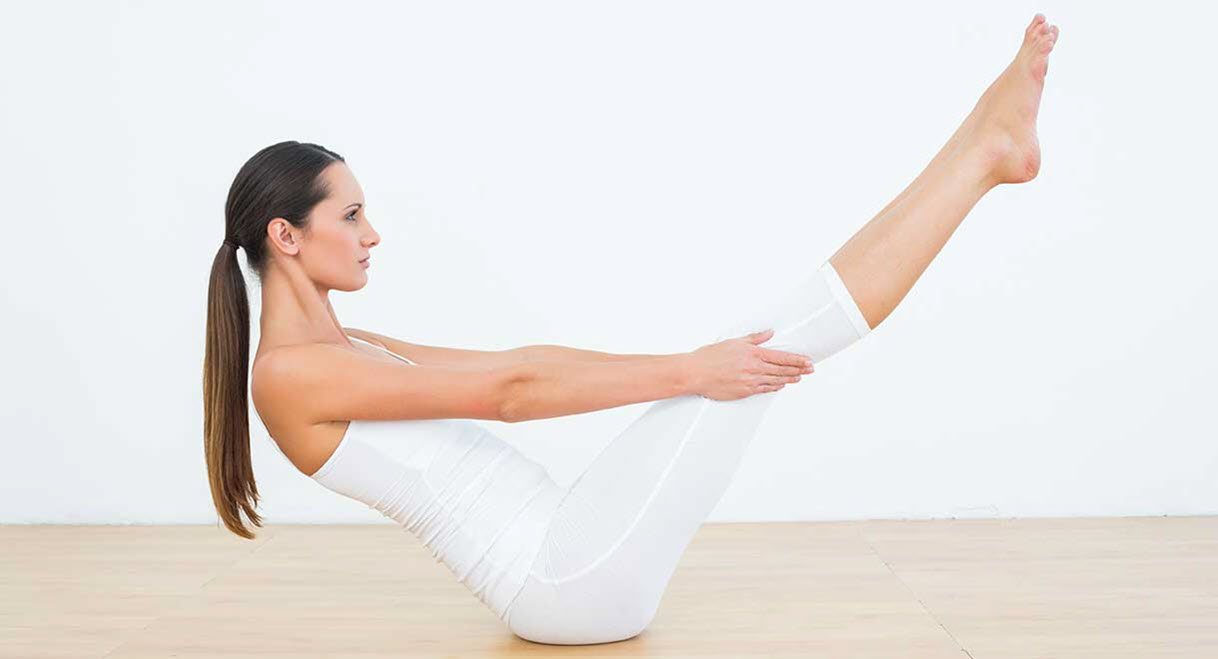
Boat pose in Yoga. (Photo: TL)
How to do:
- Sit on the mat with your legs stretched out in front of you.
- Inhale and lift your legs off the ground, keeping your upper and lower body in a straight line.
- Hold the pose for 30 seconds to 1 minute.
- Exhale and return to starting position.
- Child's Pose (Balasana)
How to do it: Kneel down and bring your Fast Walks together. Sit on your heels and separate your knees hip-width apart. Exhale and bend forward so your head touches the ground. Relax your arms and reach forward, overhead.
- Butterfly Pose (Badha Konasana)
How to do:
- Sit up straight on the floor with your legs out in front of you.
- Inhale and bring both heels toward the pelvis, pressing the soles of the feet together.
- Cross your arms and wrap them around your feet, keeping your spine straight.
2.3 Other physical activities
People with high blood pressure can also participate in other physical activities such as:
- Tai Chi: A gentle yet effective physical activity that improves heart health and controls blood pressure
- Cycling: Helps improve cardiovascular health and control blood pressure
- Swimming: improves cardiovascular health, while the musculoskeletal system does not have to bear much load, very suitable for people with high blood pressure and bone and joint problems.
- Aerobics, dancing: includes dancing exercises, moves the whole body, helps increase respiratory capacity and improve blood pressure
- Weight-bearing exercise: muscle-strengthening exercises using weights or other equipment can help control blood pressure
- : helps improve flexibility, balance and control blood pressure.
3. What time of day should people with primary hypertension exercise?
The best time to exercise is in the morning when body temperature is stable.
Exercising early in the morning helps the body produce endorphins, which improve mood, reduce stress and fatigue so that the practitioner can start a new day with a refreshed and energetic spirit.
Do not exercise too close to bedtime as it may cause difficulty sleeping.
4. Things to keep in mind when exercising
Performing appropriate exercises has many health benefits for patients, however, patients need to pay attention to choosing activities that are suitable for their health and abilities.
Dr. Bill Roberts, Medical Director of the American College of Sports Medicine, said the best exercise regimen for each person is one that suits their abilities, interests, and can be maintained long-term.
When you start exercising, your heart rate will increase, as will your blood pressure. However, most people can handle this temporary spike.
It is important to listen to your body for signs of overexertion. If you experience dizziness, chest pain, jaw pain, shortness of breath, or lightheadedness during activity, you should slow down and seek medical attention before continuing your exercise routine.
In addition, patients need to pay attention to the following things during exercise to avoid affecting their health:
+ When the body is tired, the ability to concentrate and muscle strength can decrease. Exercising when the body is tired increases the risk of injury and does not maximize the benefits of the exercise.
+ If you exercise on an empty stomach, you may have energy problems. The body needs fuel to function effectively and exercising on an empty stomach can reduce performance and cause fatigue quickly.
+ After eating, blood is concentrated in the stomach and intestines, helping the digestion of food. Exercising right after a full meal can cause stomach cramps, causing discomfort or nausea.
Exercise is best done at least 1-2 hours after a meal. Make sure your body is in good energy condition. If you feel tired or hungry, take a break and consider exercising later when your body has recovered and is adequately fueled.
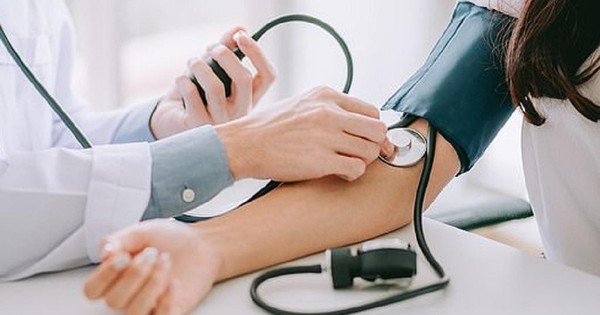 What diseases are associated with high blood pressure?
What diseases are associated with high blood pressure?Source: https://giadinh.suckhoedoisong.vn/cac-bai-tap-bo-ich-cho-nguoi-bi-tang-huyet-ap-nguyen-phat-172241027192514288.htm












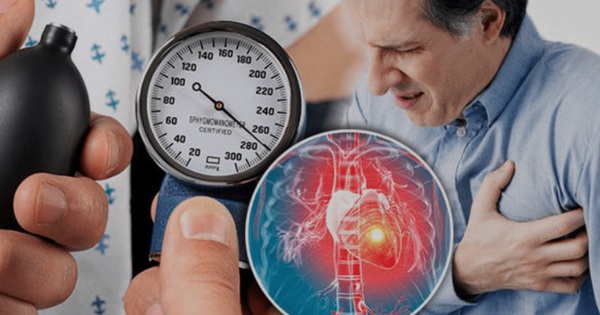
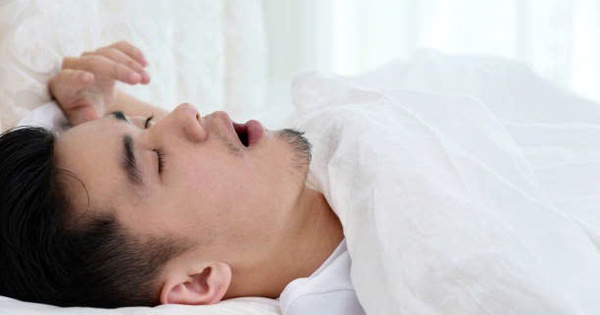
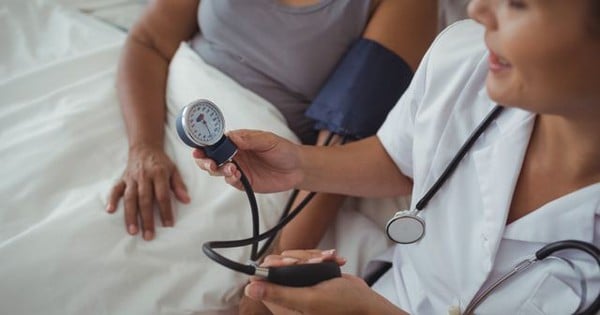
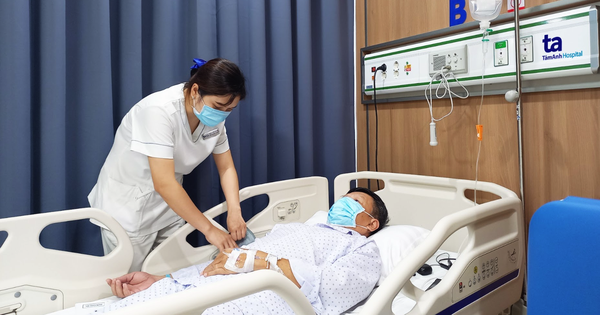
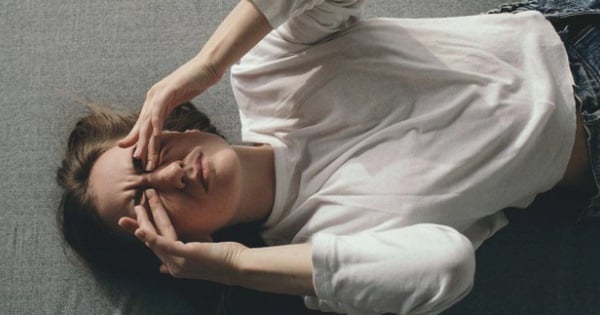


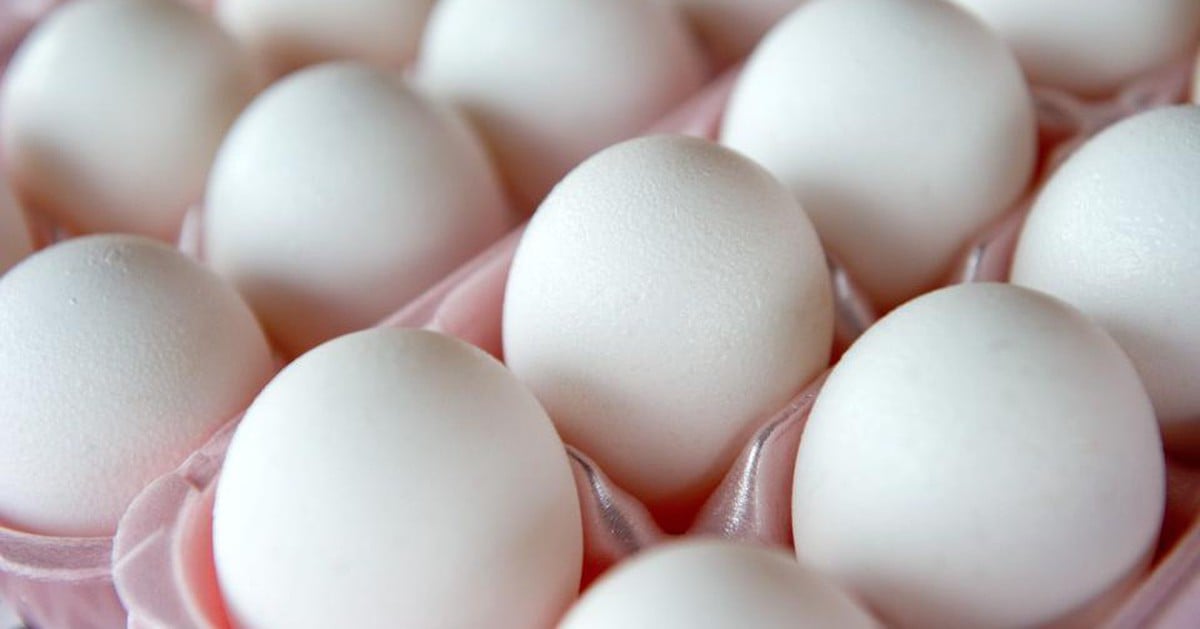

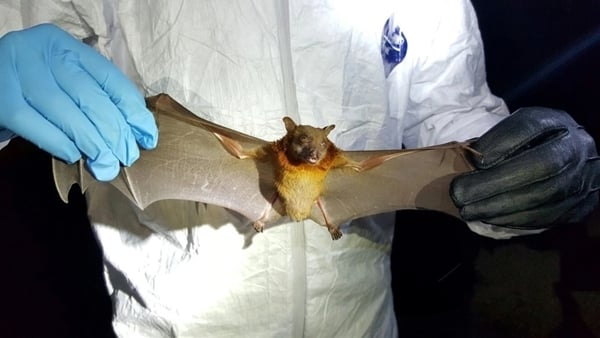

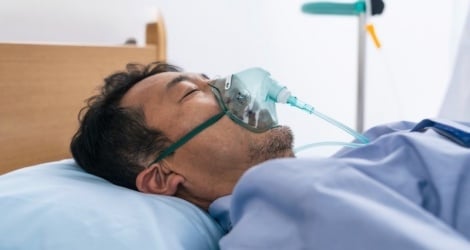




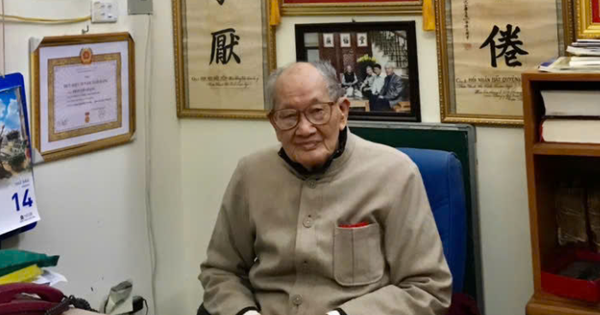













Comment (0)